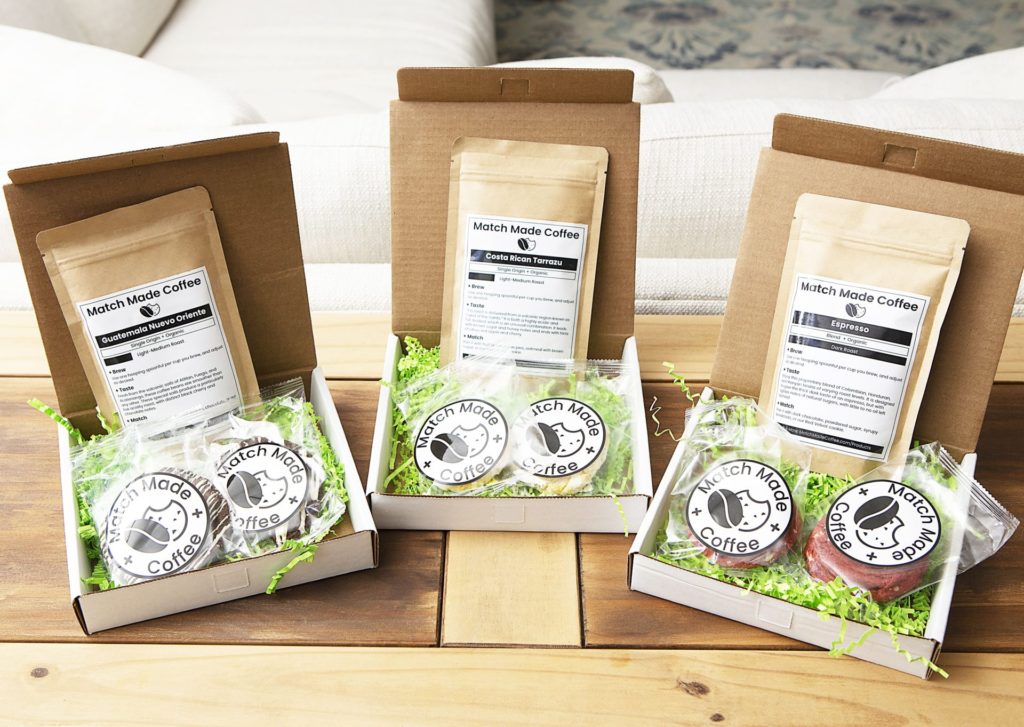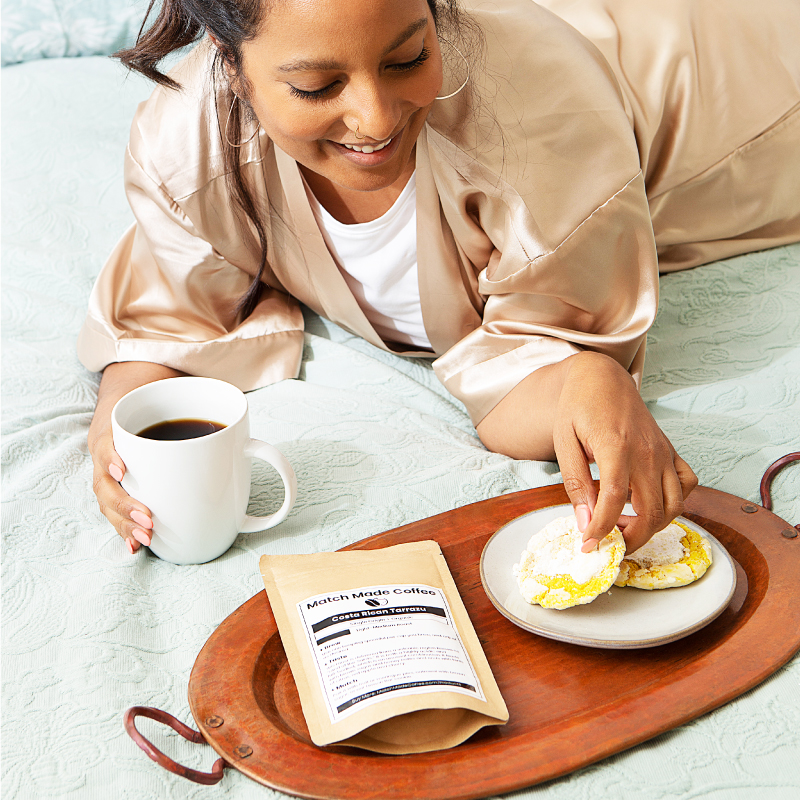Dads, granddads, uncles, nephews, cousins, the spouse’s family and more. They all might be on your gift giving list this Father’s Day.
What are you planning on getting them?
Father’s Day has been going strong for more than 100 years, and yet we still get these poor guys the same thing year after year.
What is it this year? Tie or coffee mug? ((continued))
Many people thought, and continue to think, that cold brewed coffee is simply a fad. They may think that it is riding the coattails of iced coffee, which is riding the coattails of virtually every over-sugared milkshakey coffee out there.
But, coffee sales would beg to differ.
See, traditionally coffee sales would plummet ((continued))
NPR recently posted an original piece (see their full story here) that was essentially a photo diary of Ugandan farmers.
The Ugandan farmers were given cameras, despite never having used them before, and then NPR came back later to see what photos they would have taken. This gave quite the inside look that they likely would not have received if ((continued))
Well, that’s an interesting question, and not just because we’d like to offer our subscription service to all of them.
The coffee industry is reportedly a $30 billion per year industry in the US alone. It gets tricky crunching the numbers, as they seem to vary, with USA Today claiming as many as 83% of US adults drink coffee; while Harvard reports that the National Coffee Association claims this number to be 54%.
As of 2017, the US adult population sits at ((continued))
Some of our subscription customers have rightly noticed that some pouches of coffee are slightly bigger than others. When buying coffee beans, you purchase them based upon weight.
The interesting thing is though, that the weight of a bean actually varies based on what type of roast it is ((continued))
If you have been following us on Facebook, you have heard us talk a lot about the health benefits of caffeine and coffee.
And, although there is lots of upside to coffee and caffeine, you probably do not want it in your system all the time.
Interestingly enough, how long caffeine is in your body and the kind of effect it has on your comes back to genetics. Awhile back I personally signed up for genetic testing ((continued))
We’ve been talking a lot about the differences in coffee and coffee growing regions lately (see our recent articles on Kona coffees and Guatemalan coffees), but what about growing the coffee itself?
It’s one thing to know about the area and the conditions, but what if you wanted to grow a coffee plant yourself? Well, you can follow instructions to grow coffee plants in your home.
But, instead, we are going to focus on how the current coffee farmers grow their own harvests ((continued))
As oftentimes happens, stories from hundreds or thousands of years ago get mixed up when told today. The story of coffee is no different.
When the origin story cannot even get the discoverer’s name correct (was it Kaldi or Khalid?), and cites the year this happened as sometime “around 750 AD,” then that is a sure sign that this story has seen some changes occur over time.
Most herders are very in tune with their animals, and as the story goes ((continued))
Guatemala has 4 main coffee growing regions (and 8 total), and the coffee beans are typically named after their particular region: Antigua, Coban, San Marcos, and Huehuetenango. Some Guatemala coffees are similar to Kona coffee beans in that they grow in volcano-rich soil that can have very rugged terrain ((continued))
What is a Kona coffee?
Kona coffees are the only coffees grown in the United States. More specifically, they are grown in Hawaii. Hawaii is only state anywhere near the “coffee belt” not too far from the equator.
Kona coffees are all grown on the Mauna Loa volcano. Although this volcano reaches 13,697 feet above sea level and takes up more than 50% of the main island, the coffee plants only ((continued))
What is a Kona coffee?
Kona coffees are the only coffees grown in the United States. More specifically, they are grown in Hawaii. Hawaii is only state anywhere near the “coffee belt” not too far from the equator.
Kona coffees are all grown on the Mauna Loa volcano. Although this volcano reaches 13,697 feet above sea level and takes up more than 50% of the main island, the coffee plants only ((continued))
It is an interesting marketing ploy that many companies seem to be utilizing these days, blatantly stating that their beans are arabica.
Have you ever wondered what this meant?
Well, of all the different coffees you drink, they are all derived from essentially two types of beans: arabica and robusta.
Each bean comes with its own inherent pros and cons ((continued))
If ever there was a reason for switching to black coffee over the sugary alternatives, this article may provide it.
First, you need to understand how much is too much, and how much you are actually having.
xylitol-birch
There are 12.5 grams of sugar in a tablespoon of pure sugar. Now, when you look at the back of products at their food labels, you have a bit of a reference point.
WebMD says that women should be having the equivalent of 6 tablespoons of sugar per day, and men should be having 9. However, the actual American is consuming over 20.
This is easy to understand how easy it is to have too much when a venti unicorn frappuccino from Starbucks has almost exactly 6 tablespoons of sugar all by itself. Heck, a single cup of milk has one tablespoon just by itself, and that’s a relatively healthy food item ((continued))
In 2019, on the corner of Michigan Avenue and Erie Street in Chicago, Starbucks plans to open up its largest roastery concept location yet.
This 4 story location will not be a typical store location. Customers will get to watch coffee beans being brewed and packaged, and will also get access to special small reserve batches. The location is set to offer tours, multiple brewing methods, and specialty drinks and artisanal snacks ((continued))
Coffee is big business in the United States. There are 150 million coffee drinkers drinking an average of 3.2 cups per day, according to recent statistics. This is nearly a half billion cups, just in the US.
This may seem like a lot, but when you consider that the US isn’t even in the top 20 coffee drinking countries, it makes you wonder.
For how much coffee is being consumed, you would think that coffee must be grown all over. This is true to an extent. However, Brazil alone is responsible for over 25% of all coffee grown across the world.
Where it gets crazy is when you consider we reported in a previous article that the single biggest influence on coffee prices is the weather in Brazil ((continued))
We’ve all seen the “fair trade coffee” certification on coffees, and even have a rough idea of what they are. But, other than roughly knowing it is better for the coffee farmers, what do we really know?
What does it take to get that certification?
To fully understand the fair trade certification, you need ((continued))
When asked, most people recognize that coffee has lots of health benefits. If you didn’t know that, well, now is your time to celebrate.
Some people wonder whether this is because coffee has protein in it (especially since we did a blog about a caffeinated protein shake recipe).
It may surprise people, but ((continued))
Most people know that taste and smell are closely aligned. And, many people talk about how to properly taste food (us included here), and vaguely give tips about smelling.
Those tips for smelling your food before eating it generally just revolve around actually doing it and being conscious of it. But how can you enhance that experience even further?
Well, there are a few ways:
((continued))
Slovak company CLRCFF has launched a clear coffee. Yes, you heard correctly. A clear coffee.
clear-coffee-ft-blog0417_0
With recent press from Buzzfeed, Cosmopolitan, and some major media outlets it is starting to gain some momentum.
The drink is advertised to be coffee that does not stain your teeth. Which sounds pretty awesome in and of itself. They also loudly market that it does not have any sugars, sweeteners, preservatives, or stabilizers (whatever a stabilizer is supposed to be) {{…continued…}}
There are over 7 billion people on this planet. When you deal with such astronomically large, virtually incomprehensible numbers, what seems like the weirdest and most strange things you think nobody could possibly like, actually end up having quite the following. And, when you consider that coffee is the world’s most popular drug, well, there should be no surprise that there are some very peculiar coffees out there. We’ve compiled the best (or worst, depending on your level of coffee adventurousness), and detail the unique roles that the animal kingdom plays in bringing these unique coffees to life.





